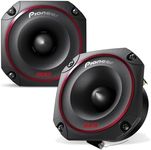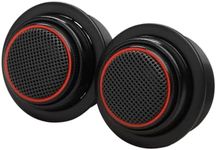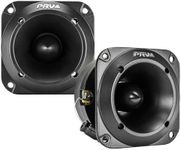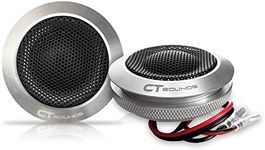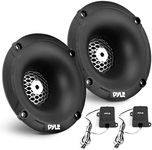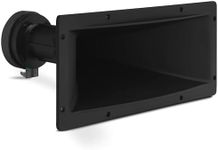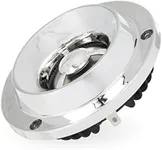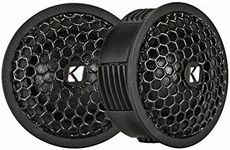Buying Guide for the Best tweeters
When it comes to choosing the right tweeters for your audio system, it's important to understand the key specifications that will impact the sound quality and overall performance. Tweeters are responsible for producing the high-frequency sounds in your audio setup, so selecting the right ones can make a significant difference in your listening experience. Here are the key specs you should consider and how to navigate them to find the best fit for your needs.Frequency ResponseFrequency response refers to the range of frequencies that a tweeter can reproduce. This is important because it determines how well the tweeter can handle high-frequency sounds. A typical range for tweeters is from around 2,000 Hz to 20,000 Hz. If you enjoy music with a lot of high-pitched instruments or vocals, look for tweeters with a wider frequency range. For general listening, a standard range will suffice.
SensitivitySensitivity measures how efficiently a tweeter converts power into sound. It is usually expressed in decibels (dB) and indicates how loud the tweeter will be at a given power level. Higher sensitivity means the tweeter will produce more sound with less power. If you have a low-powered amplifier, look for tweeters with higher sensitivity (90 dB or above). For high-powered systems, sensitivity is less critical, but higher values can still provide better performance.
Power HandlingPower handling indicates the amount of power a tweeter can handle without being damaged. It is usually given in watts (W) and includes both RMS (continuous power) and peak (maximum power) ratings. If you have a powerful amplifier, choose tweeters with higher power handling to avoid distortion or damage. For moderate systems, standard power handling ratings will be sufficient.
ImpedanceImpedance is the resistance a tweeter offers to the electrical current from the amplifier, measured in ohms (Ω). Common values are 4 ohms and 8 ohms. Matching the impedance of your tweeters to your amplifier is crucial for optimal performance. Check your amplifier's specifications and choose tweeters with the same impedance rating to ensure compatibility and efficiency.
MaterialThe material of the tweeter diaphragm affects the sound quality and durability. Common materials include silk, metal, and composite. Silk tweeters tend to produce a smoother, more natural sound, making them ideal for classical or jazz music. Metal tweeters, such as aluminum or titanium, offer a brighter, more detailed sound, suitable for rock or electronic music. Composite materials provide a balance between the two. Choose the material based on your music preferences and desired sound characteristics.
Mounting OptionsMounting options refer to how and where the tweeters can be installed in your audio system. Surface, flush, and angle mounts are common types. Surface mounts are easy to install and can be placed on top of surfaces. Flush mounts are embedded into the surface for a cleaner look. Angle mounts allow you to direct the sound towards the listening area. Consider your vehicle or room setup and choose the mounting option that best fits your installation needs and aesthetic preferences.




